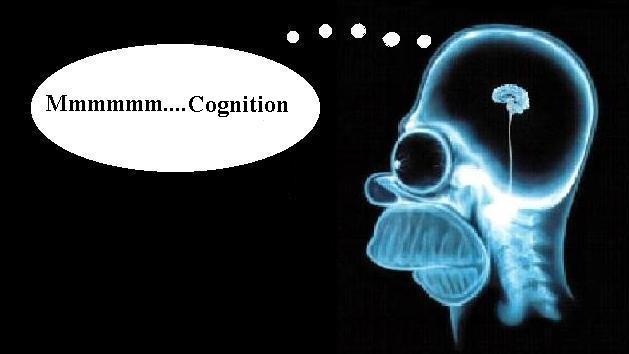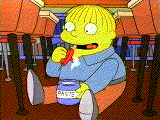Articles
Note: Articles denoted
by * are only for the presenting student to read, no one else
September 3rd: Sensory Memory, Pattern Recognition, the lead up to attention
*Alvarez, G. A., & Cavanagh, P. (2004). The capacity of visual short-term memory is set both by visual information load and by number of objects. Psychological Science, 15, 106-111.
Cowan, N., Suomi, K., & Morse, P. A. (1982). Echoic storage in infant perception. Child Development, 53, 984-990.
Luck, S. J., & Vogel, E. K. (1997). The capacity of visual working memory for features and conjunctions. Nature, 390, 279-281.
Zhong-Lin Lu, Neuse , J., Madigan, S., & Dosher, B. A. (2005). Fast decay of iconic memory in observers with mild cognitive impairments. PNAS Proceedings of the National Academy of Sciences, 102, 1797-1802.
September 10: Attention basics, development of attention
*Kramer, A. F., & Hahn, S. (1995). Splitting the beam: Distribution of attention over noncontiguous regions of the visual field. Psychological Science, 6, 381-386.
Muller, M., M., & Hubner, R. (2002). Can the spotlight of attention be shaped like a doughnut? Evidence from steady-state visual evoked potentials. Psychological Science, 13, 119-124.
Posner, M. I. (1980). Orienting of attention. Quarterly Journal of Experimental Psychology, 32, 3-25.
September 17: Gaze cues, faces, arrows, other cues
Fischer, M. H., Castel, A. C., Dodd, M. D., & Pratt, J. (2003). Perceiving numbers causes spatial shifts of attention. Nature Neuroscience , 6 , 555-556.
*Friesen, C. K., & Kingstone, A. (1998). The eyes have it! Reflexive orienting is triggered by nonpredictive gaze. Psychonomic Bulletin & Review, 5, 490-495.
Hommel, B., Pratt, J., Colzato, L., & Godijn, R. (2001). Symbolic control of visual attention. Psychological Science, 12, 360-365.
Kingstone, A., Tipper, C., Ristic, J., & Ngan, E. (2004). The eyes have it!: An fMRI investigation. Brain & Cognition, 55, 269-271.
September 24: Prejudice and attention
*Article 1 (for presenting student only)
Article 2
Article 3
Article 4
October 1: Change blindness/inattentional blindness
Davies, G., & Hine, Sarah. (2007). Change blindness and eyewitness testimony. The Journal of Psychology , 141 , 423-434.
Fougnie, D., & Marios, R. (2007). Executive working memory load induced inattentional blindness. Psychonomic Bulletin & Review, 14 , 142-147.
Kuhn, G., & Tatler, B. (2005). Magic and fixation: Now you don't see it, now you do. Perception , 34 , 1155-1161.
*Simons, D. J., & Levins, D. T. (1998). Failure to detect changes to people during a real-world interaction. Psychonomic Bulletin & Review, 5, 644-649
October 8: Visual search in and out of the lab
*Fleck, M. S., & Mitroff, S. R. (2007). Rare targets are rarely missed in correctable search. Psychological Science, 18, 943-947.
Horowitz, T. S., & Wolfe, J. M. (1998). Visual search has no memory. Nature, 394, 575-577.
Kristjansson, A. (2000). In search of remembrance: Evidence for memory in visual search. Psychological Science, 11, 328-332.
McCarley, J. S., Kramer, A. F., Wickens, C. D., Vidoni, E. D., & Boot, W. R. (2004). Visual skills in airport-security screening. Psychological Science, 15 , 302-306.
October 15: Automatic and Controlled Processing
Bargh, J. A., Chen, M., & Burrows, L. (1996). Automaticity of Social Behavior: Direct effects of trait construct and stereotype activation on action. Journal of Personality and Social Psychology, 71, 230-244.
Gehring, W. J., Karpinski, A., & Hilton, J. L. (2003). Thinking about interracial interactions. Nature Neuroscience, 6, 1241-1243.
*Raz, A., Moreno-Iniguez, M., Martin, L., & Zhu, H. (2007). Suggestion overrides the Stroop effect in highly hypnotizable individuals. Consciousness & Cognition, 16, 331-338.
Yantis, S. (1993). Stimulus-driven attentional capture and attentional control settings. Journal of Experimental Psychology: Human Perception and Performance, 19, 676-681.
October 22: Eye Movements (with some aging thrown in)
Bojko, A., Kramer, A. F., & Peterson, M. S. (2004). Age equivalence in switch costs for prosaccade and antisaccade tasks.
Irwin, D. E., & Brockmole, J. R. (2004). Suppressing where but not what: The effect of saccades on dorsal- and ventral-stream visual processing. Psychological Science, 15, 467-473.
Scialfa, C. T., Hamaluk, E., Skaloud, P., & Pratt, J. (1999). Age differences in saccadic averaging. Psychology and Aging, 14, 695-699.
*Trottier, L., & Pratt, J. (2004). Visual processing of targets can reduce saccadic latencies. Vision Research, 45, 1349-1354.
October 29: Perception and Action/Performance
Brass, M., & Heyes, C. (2005). Imitation: Is cognitive neuroscience solving the correspondence problem. Trends in Cognitive Sciences, 9, 489-495.
Knoblich, G., & Flach, R. (2001). Predicting the effects of actions: Interactions of perception and action. Psychological Science, 12, 467-472.
*Kunde, W., Landgraf, F., Paelecke, M., & Kiesel, A. (2007). Dorsal and ventral processing under dual-task conditions. Psychological Science, 18, 100-104
Witt, J. K., & Proffitt, D. R. (2005). See the ball, hit the ball: Apparent ball size is correlated with batting average. Psychological Science, 937-938.
November 5: Errors of Attention/Perception, Visual Illusions
Dodd, M. D., McAuley, T., & Pratt, J. (2005). An illusion of 3-D motion with the Ternus display. Vision Research, 45, 969-973.
*Glover, S. (2003). Visual illusions affect planning but not control. Trends in Cognitive Sciences, 6, 288-292.
Glover, S., & Dixon , P. (2001). The role of vision in the on-line correction of illusion effects on action. Canadian Journal of Experimental Psychology, 55, 96-103.
Milner, D., & Dyde, R. (2003). Why do some perceptual illusions affect visually guided action, when others don't? Trends in Cognitive Sciences, 7, 10-11.
November 12: Emotion and Attention
*Fox, E., Griggs, L., & Mouchlianitis, E. (2007). The detection of fear-relevant stimuli: Are guns noticed as quickly as snakes. Emotion, 7, 691-696.
Hajcak, G., & Olvet, D. M. (2008). The persistence of attention to emotion: Brain potentials during and after picture presentation. Emotion, 8, 250-255.
Hope, L., & Wright, D. (2007). Beyond unusual? Examining the role of attention in the weapon focus effect. Applied Cognitive Psychology, 21, 951-961.
Schmidt, S. R. (2002). Outstanding Memories: The positive and negative effects of nudes on memory. Journal of Experimental Psychology: Learning, Memory, & Cognition , 28 , 353-361.
November 19: Video Games and Performance
Feng, J., Spence, I. , & Pratt, J. (2007). Playing an action video game reduces gender differences in spatial cognition. Psychological Science, 18, 850-855.
*Green, C. S., & Bavelier, D. (2003). Action video game modifies visual selective attention. Nature, 423, 534-537.
Green, C. S., & Bavelier, D. (2006). Effect of action video games on the spatial distribution of visuospatial attention. Journal of Experimental Psychology: Human Perception and Performance, 32, 1465-1478.
Green, C. S., & Bavelier, D. (2007). Action-video-game experience alters the spatial resolution of vision. Psychological Science, 18, 88-94.
December 3: Cognitive Disorders, effect on attention/performance
Flor, H. (2002). Phantom-limb pain: Characteristics, causes, and treatment. The Lancet Neurology, 1, 182-189.
Gillen, J. A., & Dutton, G. N. (2003). Balint's syndrome in a 10-year-old male. Developmental Medicine & Child Neurology, 45, 349-352.
*Smilek, D., Dixon , M. J., Cudaby, C., & Merikle, P. M. (2002). Synesthetic color experiences influence memory. Psychological Science, 13, 548-552.
Trevethan, C. T., Sahraie, A., & Weiskrantz, L. (2007). Can blindsight be superior to 'sighted- sight'? Cognition, 103, 491-501.

